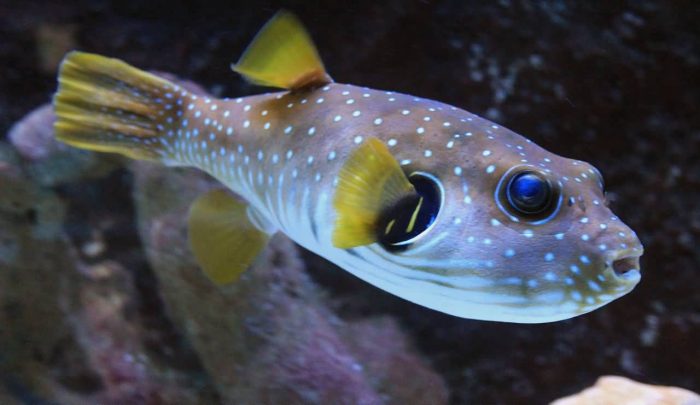
The warm waters during an El Niño year can guide pufferfish from Baja California to venture as far north as Monterey Bay in Central California. to warm, can change pufferfish distribution as well. Other northern-reaching pufferfish include species that inhabit the East Sea, which is between the Korean Peninsula and Japan.Įl Niño, the winter weather pattern that causes waters on the Pacific Coast of the U.S. The northern puffer doesn’t produce tetrodotoxin, making it safer for people to prepare and eat the fish. The Chesapeake Bay is prime habitat for them, where they are caught for a small commercial fish market. It even reaches all the way up to Newfoundland in Canada! The northern pufferfish lives in protected areas, typically with brackish water. It lives along the entire Eastern Seaboard of the U.S. The Northern Puffer, as its name implies, voyages further north than other species of puffers. For example, pufferfish occupy the entire Gulf of Mexico but not the open waters of the expansive Atlantic and Pacific oceans. They can fare alright in protected seas, but not the open ocean. In general, they like coral reefs, brackish water estuaries, and shallower waters. They thrive in the Amazon and the winding river complexes that lace Bangladesh and Myanmar. It is much easier to keep a freshwater aquarium than a saltwater aquarium, and the tiny pygmy pufferfish is a cute addition to these aquascapes.įreshwater pufferfish prefer rivers to lakes. Home aquarium enthusiasts enjoy these puffers. These types of puffers are restricted to the tropics and subtropics, mainly in South America, Africa, and Southeast Asia. There are also 35 species of pufferfish that live exclusively in freshwater habitats. Yes! While puffers live primarily in the ocean, there are species of pufferfish that live in brackish water. Most puffers prefer warm, shallow tropical and subtropical ocean waters.Ī large stellate pufferfish at a coral reef. The smallest puffer is only an inch long, while the largest is about 3 feet. This is a relatively diverse family of fish.

There are about 200 species of pufferfish around the world in 39 different genera. Pufferfish can live on a vegetarian diet of algae but prefer meaty crustaceans when available. The puffers use them to crunch hard marine shells of muscles, clams, and even crabs. Tetraodontidae, the puffer family, means ‘four teeth.’ This refers to the four teeth on the top and the bottom of the puffers’ mouths that fuse into plates.

A difference between pufferfish and porcupine fish is that puffers’ spines are only visible when they are puffed up, while porcupines fishes spines are always visible. It also includes some different looking types, such as sunfish and triggerfish.

This order includes fish that look similar to the puffers, such as porcupine fish and boxfish. ‘Pufferfish’ are a family of fish that is part of the order Tetraodontiformes. Pufferfish obviously have a good aesthetic taste. Some species make stunning, geometric patterns in the sand as nests! These attractive nests are made by males to lure in potential mates. How did the dolphins first discover that merely sucking on the fish would produce a psychoactive effect when eating the same fish would kill them?Īlright, last fun fact about pufferfish. After all, medicines and drugs are just poisons at a lower dosage. In fact, it appears that they suckle on these fish to get high off of the toxin. Like humans, dolphins aren’t completely deterred by the puffer’s toxins.
#Puffer fish puff up full#
Who would expect such a pretty fish to be full of such potent toxins! Apparently, the amount of tetrodotoxin in a single puffer is enough to kill 30 fully grown humans. It is 1,200 times more deadly than cyanide. This fish toxin is amongst the most toxic things known to humankind. Since humans insist on eating these dangerous fish, they invite a deadly risk into their diet. Or perhaps it is more accurate to say that the puffers had no intention of killing a human. Puffers kill people around the world every year with their deadly tetrodotoxin. In particular, they rely on the incredible potency of the toxin they produce. Since puffers aren’t particularly fast fish, they rely on scaring predators rather than swimming away. This behavior is to intimidate predators. They do this by sucking tons of water (or air if out of water) into their elastic stomachs. Obviously, pufferfish puff up to a surprising size when frightened. Since you’ve landed on this webpage, perhaps you’ve heard some of the crazy facts about puffers. Puff puffs up into that classic, silly-looking pufferfish.
#Puffer fish puff up driver#
Spongebob is an awful driver and every time he crashes, Mrs. I first learned of pufferfish through the popular kid’s show, Spongebob.

Pufferfish are one of the most recognizable fish around the globe.


 0 kommentar(er)
0 kommentar(er)
